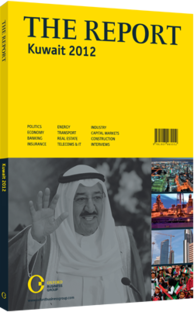Jazeera Airways: Aviation
THE COMPANY: Jazeera Airways was incorporated in 2004 as a Kuwait-based public shareholding company engaging in the business of air transportation and commercial passenger services. The airline provides a lowfare business model for passengers, and owns a fleet of Airbus A320 aircrafts flying to different destinations throughout the Middle East and Asia. It has two subsidiaries, Jazeera Leasing and Sahaab Aircraft Leasing, which were set up for the purpose of arranging finance for acquiring aircraft and engines and leasing them to the parent company. Jazeera owns 11 Airbus A320, with four to be delivered between 2012 and 2014. Jazeera’s total assets grew at a robust pace in the 2005-10 period, posting a five-year compound annual growth rate (CAGR) of 38% to reach KD173m ($623.66) in 2010 from KD34m ($122.57m) in 2005. The growth witnessed during this period came on the back of fleet expansion, reaching KD159m ($573.19m) in 2010, constituting 92% of assets. Nevertheless, Jazeera obtained financing through term loans from local and foreign banks, with total debt jumping to KD91.4m ($329.49m) in 2010, up from KD27.5m ($99.14m) in 2009. Shareholders’ equity grew at a five-year CAGR of 13% to reach KD15.4m ($55.52m) in 2010 from KD8.5m ($30.64m) in 2005. During the past two years, Jazeera’s equity base has been following a downward trend due to retained losses of KD3.2m ($11.54m) and KD6m ($21.63m) in 2009 and 2010, respectively. During the first half of 2011, no major developments occurred in the balance sheet, as assets recorded a marginal growth of 1.3% to KD175.5m ($632.68m). Interest-bearing debt fell to KD86m ($310m) from KD91.4m ($329.49m) in 2010 due to a large portion of non-current loans being paid off. The 18% increase in shareholder equity to KD18.2m ($65.61m) is attributed to the improvement in profitability, thus reducing its retained losses to KD 2.9m ($10.45m) in the first half of 2011, down from KD6m ($21.63m) in 2010. During the 2005-10 period, Jazeera’s operating revenues grew at a robust CAGR of 104% to KD42.6m ($153.57m) in 2010 despite falling from KD48.7m ($175.56m) and KD46m ($165.83m) in 2008 and 2009, respectively. Effective cost management was evident in 2010, with the cost of revenues falling 28% to KD37m ($133.38m) from KD51.5m ($185.66m), resulting in a gross profit of KD5.3m ($19.1m). This was offset, however, by the increase in the finance cost to KD4.8m ($17.3m) due to additional borrowing worth KD79m ($284.79m) in 2010. Nevertheless, Jazeera reduced its total losses in 2010 to approximately KD2.8m ($10.09m), down from a loss of KD8.2m ($29.56m) in 2009.
Following two years of consecutive losses in 2009 and 2010, Jazeera returned to profit in the first half of 2011, posting KD3.1m ($11.17m) compared to a KD9.2m ($33.17m) loss witnessed in the first half of 2010. This indicates that the Turn-Around Plan (TAP) introduced in May 2010 brought increased flexibility and efficiency, mainly by reducing operating expenses. Despite higher fuel costs and political instability in some areas, operating revenues jumped to KD25.3m ($91.2m) in the first half of 2011, a 42% increase from KD17.8m ($64.17m) in the first half of 2010, thanks in part to a higher load factor (ratio of passenger-kilometres flown to seat-kilometres available) and capturing a larger market share by introducing Cairo as a new destination. The second quarter of 2011 marked Jazeera’s best second quarter since its inception.
DEVELOPMENT STRATEGY: With Jazeera maintaining its same strategy to become the leading low-cost carrier in the Middle East region, we estimate that revenues will increase going forward on higher expected demand and larger market share, despite rising fuel prices. In Kuwait, the third quarter usually witnesses more demand for travel, and with the exit of Wataniya Airways as a core competitor, coupled with increasing market share on the Cairo route, revenues should grow. Its rigorous cost control and TAP will help sustain profitability. Any plans to exploit new destinations, similar to Cairo, which captured some 23% market share in just six weeks, will result in further gains and thus increased revenues.
You have reached the limit of premium articles you can view for free.
Choose from the options below to purchase print or digital editions of our Reports. You can also purchase a website subscription giving you unlimited access to all of our Reports online for 12 months.
If you have already purchased this Report or have a website subscription, please login to continue.

